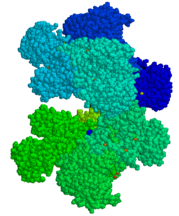Definition
Sulfonamides are medicines that prevent the growth of bacteria in the body.
Purpose
Sulfonamides are used to treat many kinds of infections caused by bacteria and certain other microorganisms. Physicians may prescribe these drugs to treat urinary tract infections, ear infections, frequent or long-lasting bronchitis, bacterial meningitis, certain eye infections, Pneumocystis carinii pneumonia, traveler's diarrhea, and a number of other kinds of infections. These drugs will not work for colds, flu, and other infections caused by viruses.
Description
Sulfonamides, also called sulfa medicines, are available only with a physician's prescription. They are sold in tablet and liquid forms. Some commonly used sulfonamides are sulfisoxazole (Gantrisin) and the combination drug sulfamethoxazole and trimethoprim (Bactrim, Cotrim).
Recommended dosage
The recommended dosage depends on the type of sulfonamide, the strength of the medicine, and the medical problem for which it is being taken. Check with the physician who prescribed the drug or the pharmacist who filled the prescription for the correct dosage.
Always take sulfonamides exactly as directed. To make sure the infection clears up completely, take the medicine for as long as it has been prescribed. Do not stop taking the drug just because symptoms begin to improve. Symptoms may return if the drug is stopped too soon.
Sulfonamides work best when they are at constant levels in the blood. To help keep levels constant, take the medicine in doses spaced evenly through the day and night. Do not miss any doses. For best results, take the medicine with a full glass of water and drink several more glasses of water every day. This will help prevent some of the medicine's side effects.
Precautions
Symptoms should begin to improve within a few days of beginning to take this medicine. If they do not, or if they get worse, check with the physician who prescribed the medicine.
Although such side effects are rare, some people have had severe and life-threatening reactions to sulfonamides. These include sudden, severe liver damage, serious blood problems, breakdown of the outer layer of the skin, and a condition called Stevens-Johnson syndrome, in which people get blisters around the mouth, eyes, or anus. Call a physician immediately if any of these signs of a dangerous reaction occur:
- Skin rash or reddish or purplish spots on the skin
- Other skin problems, such as blistering or peeling
- Fever
- Sore throat
- Cough
- Shortness of breath
- Joint pain
- Pale skin
- Yellow skin or eyes.
This medicine may cause dizziness. Anyone who takes sulfonamides should not drive, use machines or do anything else that might be dangerous until they have found out how the drugs affect them.
Sulfonamides may cause blood problems that can interfere with healing and lead to additional infections. Avoid injuries while taking this medicine. Be especially careful not to injure the mouth when brushing or flossing the teeth or using a toothpick. Do not have dental work done until the blood is back to normal.
This medicine may increase sensitivity to sunlight. Even brief exposure to sun can cause a severe sunburn or a rash. While being treated with this medicine, avoid being in direct sunlight, especially between 10 a.m. and 3 p.m.; wear a hat and tightly woven clothing that covers the arms and legs; use a sunscreen with a skin protection factor (SPF) of at least 15; protect the lips with a sun block lipstick; and do not use tanning beds, tanning booths, or sunlamps.
Babies under 2 months should not be given sulfonamides unless their physician has ordered the medicine.
Older people may be especially sensitive to the effects of sulfonamides, increasing the chance of unwanted side effects, such as severe skin problems and blood problems. Patients who are taking water pills (diuretics) at the same time as sulfonamides may also be more likely to have these problems.
Special conditions
People with certain medical conditions or who are taking certain other medicines can have problems if they take sulfonamides. Before taking these drugs, be sure to let the physician know about any of these conditions:
Allergies
Anyone who has had unusual reactions to sulfonamides, water pills (diuretics), diabetes medicines, or glaucoma medicine in the past should let his or her physician know before taking sulfonamides. The physician should also be told about any allergies to foods, dyes, preservatives, or other substances.
Pregnancy
In studies of laboratory animals, some sulfonamides cause birth defects. The drugs' effects on human fetuses have not been studied. However, pregnant women are advised not to use this medicine around the time of labor and delivery, because it can cause side effects in the baby. Women who are pregnant or who may become pregnant should check with their physicians about the safety of using sulfonamides during pregnancy.
Breastfeeding
Sulfonamides pass into breast milk and may cause liver problems, anemia, and other problems in nursing babies whose mothers take the medicine. Because of those problems, women should not breastfeed when they are under treatment with this drug. Women who are breastfeeding and who need to take this medicine should check with their physicians to find out how long they need to stop breastfeeding.
Other medical conditions
Before using sulfonamides, people with any of these medical problems should make sure their physicians are aware of their conditions:
- Anemia or other blood problems
- Kidney disease
- Liver disease
- Asthma or severe allergies
- Alcohol abuse
- Poor nutrition
- Abnormal intestinal absorption
- Porphyria
- Folic acid deficiency
- Deficiency of the enzyme glucose-6-phosphate dehydrogenase (G6PD).
Use of certain medicines
Taking sulfonamides with certain other drugs may affect the way the drugs work or may increase the chance of side effects.
Side effects
The most common side effects are mild diarrhea, nausea, vomiting, dizziness, headache, loss of appetite, and tiredness. These problems usually go away as the body adjusts to the drug and do not require medical treatment.
More serious side effects are not common, but may occur. If any of the following side effects occur, check with a physician immediately:
- Itching or skin rash
- Reddish or purplish spots on the skin
- Other skin problems, such as redness, blistering, peeling
- Severe, watery or bloody diarrhea
- Muscle or joint aches
- Fever
- Sore throat
- Cough
- Shortness of breath
- Unusual tiredness or weakness
- Unusual bleeding or bruising
- Pale skin
- Yellow eyes or skin
- Swallowing problems.
Other rare side effects may occur. Anyone who has unusual symptoms while taking sulfonamides should get in touch with his or her physician.
Interactions
Sulfonamides may interact with a large number of other medicines. When this happens, the effects of one or both of the drugs may change or the risk of side effects may be greater. Anyone who takes sulfonamides should let the physician know all other medicines he or she is taking. Among the drugs that may interact with sulfonamides are:
- Acetaminophen (Tylenol)
- Medicine for overactive thyroid
- Male hormones (androgens)
- Female hormones (estrogens)
- Other medicines used to treat infections
- Birth control pills
- Medicines for diabetes such as glyburide (Micronase)
- Anticoagulants such as warfarin (Coumadin)
- Disulfiram (Antabuse), used to treat alcohol abuse
- Amantadine (Symmetrel), used to treat flu and also Parkinson's disease
- Water pills (diuretics) such as hydrochlorothiazide (HCTZ, HydroDIURIL)
- The anticancer drug methotrexate (Rheumatrex)
- Antiseizure medicines such as valproice acid (Depakote, Depakene).
The list above does not include every drug that may interact with sulfonamides. Be sure to check with a physician or pharmacist before combining sulfonamides with any other prescription or nonprescription (over-the-counter) medicine.
Key Terms
- Anemia
- A lack of hemoglobin--the compound in blood that carries oxygen from the lungs throughout the body and brings waste carbon dioxide from the cells to the lungs, where it is released.
- Bronchitis
- Inflammation of the air passages of the lungs.
- Fetus
- A developing baby inside the womb.
- Inflammation
- Pain, redness, swelling, and heat that usually develop in response to injury or illness.
- Meningitis
- Inflammation of tissues that surround the brain and spinal cord.
- pneumonia
- A lung infection that affects people with weakened immune systems, such as people with AIDS or people taking medicines that weaken the immune system.
- Porphyria
- A disorder in which porphyrins build up in the blood and urine.
- Porphyrin
- A type of pigment found in living things.
- Urinary tract
- The passage through which urine flows from the kidneys out of the body.
Further Reading
Gale Encyclopedia of Medicine. Gale Research, 1999.



